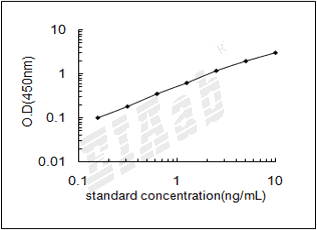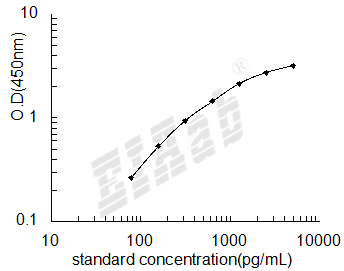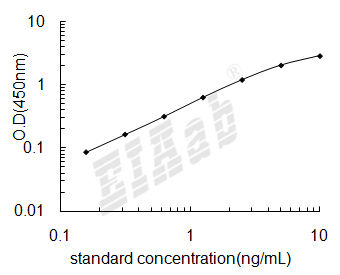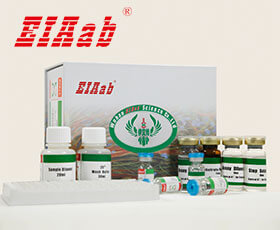MAPK3 (基因名), Mitogen-activated protein kinase 3 (蛋白名), MK03_HUMAN.
产品名称:
Human MAPK3/ Mitogen-activated protein kinase 3 ELISA Kit
丝裂原活化蛋白激酶3
货号:
E1357h
商标:
EIAab®
监管等级:
别名:
ERT2, Extracellular signal-regulated kinase 1, Insulin-stimulated MAP2 kinase, MAP kinase isoform p44, Microtubule-associated protein 2 kinase, p44-ERK1, ERK-1, p44-MAPK, MAP kinase 3, ERK1, PRKM3
检测方法:
ELISA
实验类型:
Sandwich
检测范围:
0.156-10ng/mL
灵敏度:
0.067ng/mL
特异性:
Natural and recombinant human Mitogen-activated protein kinase 3
样品类型:
Serum, plasma, tissue homogenates, cell culture supernates and other biological fluids
样品数据:
登录.
实验步骤:

研究领域:
Stem Cells
精密度
批内差:已知浓度的3个样本在一个板子内重复检测20次,以评估批内精密度。
批内 CV: ≤4.3%
批间差:已知浓度的3个样本在不同的板子上重复测定5次,以评估测定批间精密度。
批间 CV: ≤6.8%
批内 CV: ≤4.3%
批间差:已知浓度的3个样本在不同的板子上重复测定5次,以评估测定批间精密度。
批间 CV: ≤6.8%
回收率
回收率:低、中和高浓度的分析物被掺入到血清或者血浆样本中,进行回收实验测定。
|
Sample Type |
Average(%) |
Recovery Range(%) |
|
Serum |
88 |
82-94 |
|
Plasma |
90 |
84-96 |
线性
线性:给定样本通过梯度稀释,每次稀释的测量值与理论值的比值。
|
Sample |
1:2 |
1:4 |
1:8 |
1:16 |
|
serum(n=5) |
97-107% |
109-119% |
91-102% |
80-80% |
|
EDTA plasma(n=5) |
83-95% |
104-113% |
94-106% |
80-90% |
|
heparin plasma(n=5) |
108-117%
|
108-117% |
107-118% |
116-126% |
通用注释
亚单元:
Binds both upstream activators and downstream substrates in multimolecular complexes. Found in a complex with at least BRAF, HRAS, MAP2K1/MEK1, MAPK3 and RGS14 (By similarity). Binds to HIV-1 Nef through its SH3 domain. This interaction inhibits its tyrosine-kinase activity. Interacts with ADAM15, ARRB2, CANX, DAPK1 (via death domain), HSF4, IER3, MAP2K1/MEK1, MORG1, NISCH, and SGK1. Interacts with PEA15 and MKNK2 (By similarity). MKNK2 isoform 1 binding prevents from dephosphorylation and inactivation (By similarity). Interacts with TPR. Interacts with CDKN2AIP. Interacts with HSF1 (via D domain and preferentially with hyperphosphorylated form); this interaction occurs upon heat shock (PubMed:10747973).
功能:
Serine/threonine kinase which acts as an essential component of the MAP kinase signal transduction pathway. MAPK1/ERK2 and MAPK3/ERK1 are the 2 MAPKs which play an important role in the MAPK/ERK cascade. They participate also in a signaling cascade initiated by activated KIT and KITLG/SCF. Depending on the cellular context, the MAPK/ERK cascade mediates diverse biological functions such as cell growth, adhesion, survival and differentiation through the regulation of transcription, translation, cytoskeletal rearrangements. The MAPK/ERK cascade plays also a role in initiation and regulation of meiosis, mitosis, and postmitotic functions in differentiated cells by phosphorylating a number of transcription factors. About 160 substrates have already been discovered for ERKs. Many of these substrates are localized in the nucleus, and seem to participate in the regulation of transcription upon stimulation. However, other substrates are found in the cytosol as well as in other cellular organelles, and those are responsible for processes such as translation, mitosis and apoptosis. Moreover, the MAPK/ERK cascade is also involved in the regulation of the endosomal dynamics, including lysosome processing and endosome cycling through the perinuclear recycling compartment (PNRC); as well as in the fragmentation of the Golgi apparatus during mitosis. The substrates include transcription factors (such as ATF2, BCL6, ELK1, ERF, FOS, HSF4 or SPZ1), cytoskeletal elements (such as CANX, CTTN, GJA1, MAP2, MAPT, PXN, SORBS3 or STMN1), regulators of apoptosis (such as BAD, BTG2, CASP9, DAPK1, IER3, MCL1 or PPARG), regulators of translation (such as EIF4EBP1) and a variety of other signaling-related molecules (like ARHGEF2, FRS2 or GRB10). Protein kinases (such as RAF1, RPS6KA1/RSK1, RPS6KA3/RSK2, RPS6KA2/RSK3, RPS6KA6/RSK4, SYK, MKNK1/MNK1, MKNK2/MNK2, RPS6KA5/MSK1, RPS6KA4/MSK2, MAPKAPK3 or MAPKAPK5) and phosphatases (such as DUSP1, DUSP4, DUSP6 or DUSP16) are other substrates which enable the propagation the MAPK/ERK signal to additional cytosolic and nuclear targets, thereby extending the specificity of the cascade.
亚细胞位置:
Cytoplasm
Nucleus
Autophosphorylation at Thr-207 promotes nuclear localization.
该产品尚未在任何出版物中被引用。
[1].
人丝裂原活化蛋白激酶3(MAPK3)ELISA试剂盒可以做多少个样本?
人丝裂原活化蛋白激酶3(MAPK3)ELISA试剂盒分为2种规格,96孔和48孔。96孔的试剂盒,标曲和样本都做复孔的话,可以检测40个样本。96孔的试剂盒,标曲和样本都不做复孔的话,可以检测88个样本。
[2].
人丝裂原活化蛋白激酶3(MAPK3)ELISA试剂盒使用视频?
人丝裂原活化蛋白激酶3(MAPK3)ELISA试剂盒实验操作视频在以下网址中,对每一步的实验步骤都做了演示,方便实验员能更好地理解ELISA实验的过程。
https://www.eiaab.com.cn/lesson-tech/805.html
https://www.eiaab.com.cn/lesson-tech/805.html
[3].
人丝裂原活化蛋白激酶3(MAPK3)ELISA试剂盒是放在-20℃冰箱保存吗?
EIAab的人丝裂原活化蛋白激酶3(MAPK3)ELISA试剂盒,洗涤液、底物、终止液保存于4℃,其余试剂-20℃冰箱保存。
[4].
人丝裂原活化蛋白激酶3(MAPK3)ELISA试剂盒原理?
双抗体夹心法:用纯化的抗体包被微孔板,制成固相抗体,往包被有固相抗体的微孔中依次加入标准品或受检样本、生物素化抗体、HRP标记的亲和素,经过彻底洗涤后用底物TMB显色。用酶标仪在450nm波长下测定吸光度(OD值),计算样本浓度。
竞争法:用纯化的抗体包被微孔板,制成固相抗体,往包被有固相抗体的微孔中依次加入标准品或受检样本和生物素标记的目标分析物,受检标本中抗原与生物素标记抗原竞争结合有限的抗体。再加入HRP标记的亲和素,经过彻底洗涤后用底物TMB显色。用酶标仪在450nm波长下测定吸光度(OD值),计算样本浓度。
竞争法:用纯化的抗体包被微孔板,制成固相抗体,往包被有固相抗体的微孔中依次加入标准品或受检样本和生物素标记的目标分析物,受检标本中抗原与生物素标记抗原竞争结合有限的抗体。再加入HRP标记的亲和素,经过彻底洗涤后用底物TMB显色。用酶标仪在450nm波长下测定吸光度(OD值),计算样本浓度。
[5].
人丝裂原活化蛋白激酶3(MAPK3)ELISA试剂盒中需要使用的样品量是多少?
夹心法100μL/孔,竞争法50μL/孔。如样本浓度过高时,应对样本进行稀释,以使稀释后的样本符合试剂盒的检测范围,计算时再乘以相应的稀释倍数。
[6].
如何分析人丝裂原活化蛋白激酶3(MAPK3)ELISA试剂盒数据?
建议标准曲线,并计算样本浓度。对于elisa的曲线拟合,一般建议采用4参数曲线拟合,4参数曲线拟合通常更适合免疫分析。推荐使用专业软件进行曲线拟合,例如curve expert 1.3。根据样本的OD值由标曲查出相应的浓度,再乘以稀释倍数;或用标准物的浓度与OD值计算出标曲的回归方程式,将样本的OD值代入方程式,计算出样本浓度,再乘以稀释倍数,即为样本的实际浓度。以下链接是curve expert 1.3软件拟合曲线的方法。
https://www.eiaab.com.cn/news/502/
https://www.eiaab.com.cn/news/502/
[7].
人丝裂原活化蛋白激酶3(MAPK3)ELISA试剂盒中是否包含人和动物的副产物,是否包含感染的或者传染性原料如HIV等?
除了抗体和稀释液中的BSA,不含其它人和动物的副产物,也不含感染材料。
[8].
收集人丝裂原活化蛋白激酶3(MAPK3)ELISA试剂盒血浆样本,用什么作为抗凝剂?
一般建议用EDTA和肝素作为抗凝剂。
[9].
人丝裂原活化蛋白激酶3(MAPK3)ELISA试剂盒酶标板可以拆成几部分?拆的时候是否需要避光,无菌?
人丝裂原活化蛋白激酶3(MAPK3)ELISA试剂盒酶标板是8×12孔条,可拆卸,板子可以拆成12条,注意避免孔污染,不需要避光和无菌。暂时不用的板子,放回原来装的袋子里,密封保存。
[10].
人丝裂原活化蛋白激酶3(MAPK3)ELISA试剂盒样本如何保存?
尽量检测新鲜样本。若无新鲜样本,则4℃保存1周,-20℃保存1个月,-80℃保存2个月。
反馈墙
评论数 : 0
所有用户
所有用户
默认排序
默认排序
最近
早期
目前还没有评论。






通知
规格
数量
单价 (¥)
小计 1 (¥)
小计 2:
¥

规格
数量
单价 (¥)








 验证序列:
验证序列:




 折扣:
折扣: